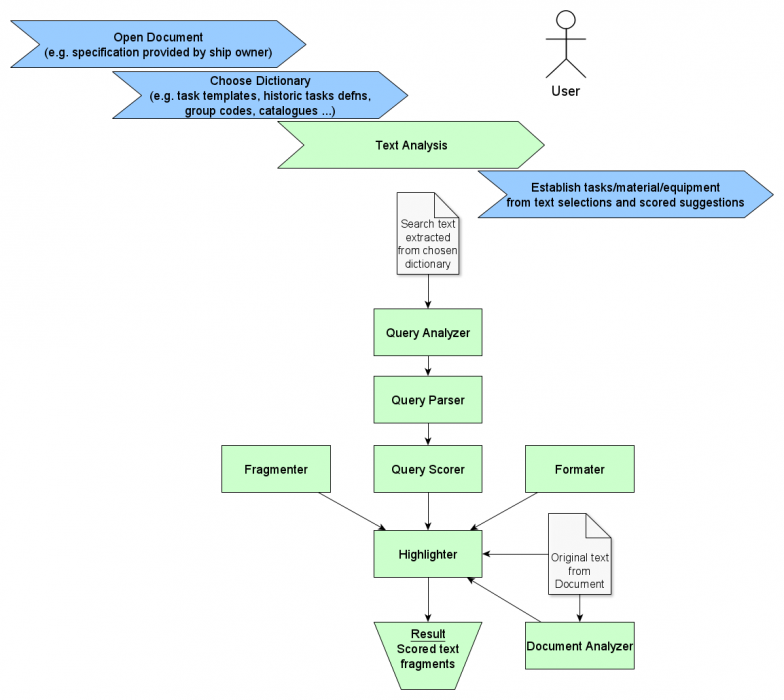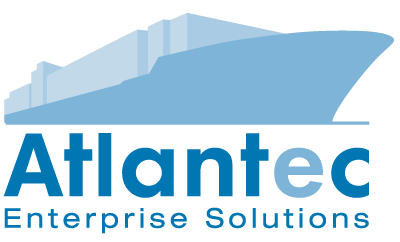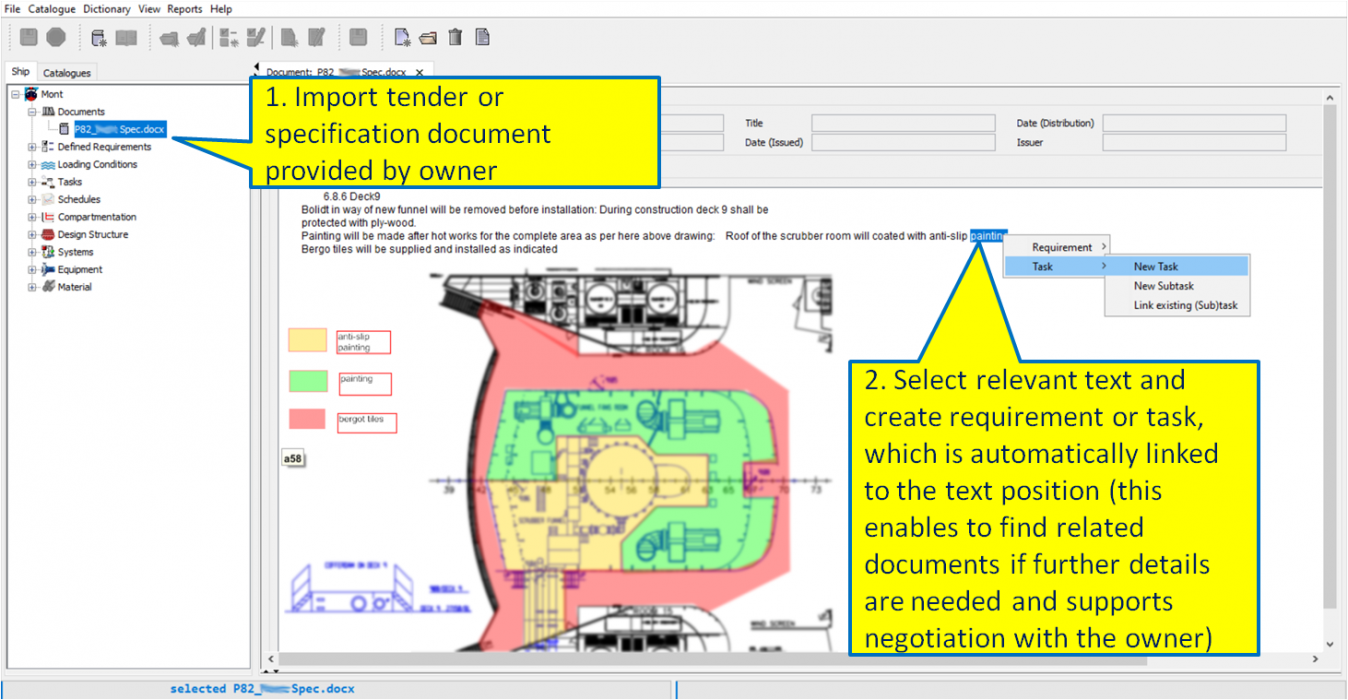Requirements Engineering
Requirements engineering is a methodology originally evolving from large-scale complex projects in space technology, aircraft development and, to some extent, large-scale information technology development projects. The benefit of using such systems is to determine, register, monitor and evaluate requirements, thus being able to verify compliance and fulfilment and to identify issues as early as possible. Due to the complexity and cost of introducing and using this technology, its application in shipbuilding has been limited to areas like large-scale offshore projects or the defence industry.
For commercial shipbuilding there exist at least the following obstacles:
- Cost of tools: requirements engineering tools are found in a high priced range both in licensing and operating cost
- Ease of use: while large-scale projects can accommodate the personnel effort to operate these systems, this seems prohibitive for most shipbuilding operations and in particular SMEs. This is related to the aspect that the level of detail and documentation is considered too high for smaller business types.

Topgallant® Requirements Engineering includes text analysis features with engineering- and planning- oriented classification of product structures, components (such as equipment), tasks and design goals, to enable planners and engineers to efficiently process technical specification documents while deriving concrete data suitable for engineering analysis, schedule derivation etc.
It is deliberately not intended to provide a fully automated process, since many decisions need to be made by creatively acting users during the planning and early design process steps. Nevertheless, the established data substantially helps during data generation in the steps to follow, such as schedule derivation and cost estimation as well as during later steps for quality control and project validation. The editor components integrate seamlessly with the Project Planning solution to be used in various stages of project execution. Tenders or specification documents (which are typically provided by the vessel owner/operator) are used as first input.
Documents are imported and requirements defined/identified, automatically linking them to the relevant text. A built-in text analysis engine assists the user in identifying the relevant statements and definitions contained in the document. Scoring algorithms are applied to match text against various dictionaries. It is not intended to fully automate the process but to assist users in their document processing activities to extract requirements and task descriptions.
Requirements are represented in machine-processable form and are used to evaluate the evolving design in respect to fulfilling the requirements. Tasks descriptions can be derived directly, which is particularly useful and relevant for the repair/ retrofitting application cases, as tenders are commonly based on brief specifications of work items or issues to be resolved.

